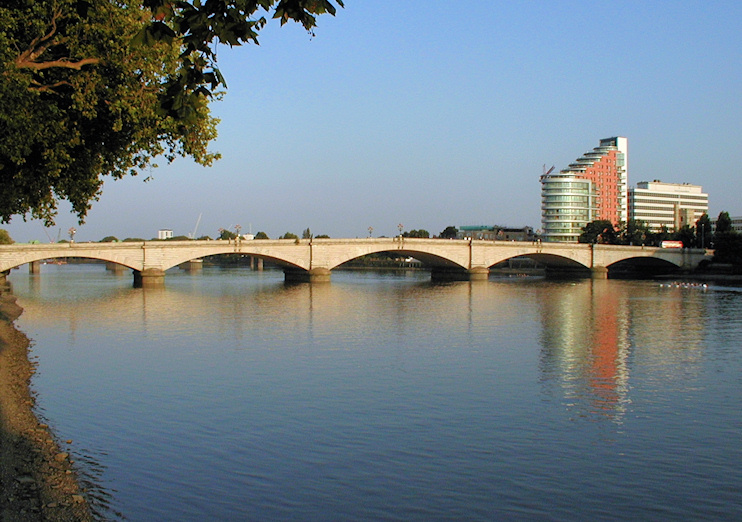Putney Bridge
Putney Bridge, Hammersmith & Fulham/Wandsworth
A busy river crossing between Putney and Fulham, and the station on its north side

The Earl of Essex erected a temporary bridge here in 1642 to facilitate troop movements. In 1729 local master carpenter Thomas Philips completed the first permanent structure, to the design of Sir Jacob Ackworth. The bridge originally had 26 arches (later reduced to 23), ranging in width from 14 to 32 feet. It provided the only dry crossing of the Thames between the City and Kingston and soon generated toll revenues of £1,500 a year.
Sir Joseph Bazalgette was responsible for the bridge’s replacement in 1886. Constructed from Cornish granite, the new bridge also served as an aqueduct, carrying water mains under the footway. Bazalgette’s bridge was widened in the 1930s.
Putney Bridge station (originally Putney Bridge and Fulham) opened in 1880 as the terminus of the Metropolitan District Railway’s newly extended West Brompton branch. In 1889 a rail bridge was constructed downstream of the road bridge, allowing a connection with the London and South Western Railway at East Putney.
Putney Bridge has been the starting point for the Oxford and Cambridge Boat Race since 1845, and it was the finishing point for the five preceding races, which began at Westminster. It is the best-known event in the rowing calendar – and was in many ways the inspiration for the modern sport. The four-and-a-quarter-mile slog to Mortlake is usually completed in less than twenty minutes and around a quarter of a million people are estimated to watch the race from the riverbank.
The melancholic writer Mary Wollstonecraft tried to drown herself by leaping from Putney Bridge one night in October 1795. She was revived by watermen who had pulled her unconscious from the river.
